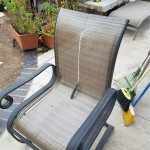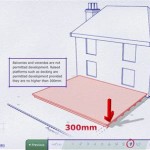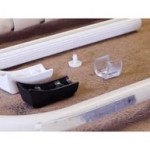Patio Slope: Necessity or Myth?
The construction of a patio involves numerous decisions, from material selection to overall design. One critical, yet often overlooked aspect, is the presence or absence of a slope. While a perfectly level patio might seem ideal aesthetically, practical considerations regarding water drainage often necessitate a slight incline. This article examines the arguments for and against incorporating a slope into a patio design, exploring the implications for durability, safety, and maintenance. Understanding these factors is essential for ensuring a patio that remains functional and attractive for years to come.
A patio, by its very nature, is exposed to the elements. Rain, snow, and ice are constant threats, and the ability to effectively manage water runoff is paramount to preventing damage and extending the patio's lifespan. Stagnant water can lead to a variety of problems, including the growth of mold and mildew, the erosion of the patio's foundation, and the deterioration of the surface materials. In colder climates, standing water can freeze and thaw, causing cracks and displacement of pavers or concrete. Consequently, the common practice of incorporating a slight slope is rooted in the desire to mitigate these risks.
The Case for a Sloped Patio: Drainage and Prevention
The primary reason for incorporating a slope into a patio design is to facilitate water drainage. A slight incline allows rainwater and melting snow to flow away from the house and off the patio surface, preventing the accumulation of standing water. This simple measure can significantly reduce the risk of water damage to the patio itself and to the adjacent structures. The recommended slope is typically around 1/4 inch per foot, which is subtle enough to be barely noticeable but sufficient to ensure effective drainage.
Standing water not only damages the patio surface but also creates an environment conducive to the growth of mold and mildew. These organisms thrive in damp conditions and can stain and degrade the patio materials. Mold and mildew can also pose a health hazard, increasing the risk of allergic reactions and respiratory problems. By promoting proper drainage, a sloped patio helps to prevent the buildup of moisture and thus inhibits the growth of these harmful organisms.
Furthermore, a sloped patio helps to protect the foundation of the house. Water pooling near the foundation can seep into the soil, potentially weakening the foundation and leading to costly repairs. Redirecting water away from the house through a sloped patio is a proactive measure that can help to prevent these problems. This is particularly important in areas with heavy rainfall or poor soil drainage.
Arguments Against a Sloped Patio: Aesthetics and Functionality
Despite the clear benefits of a sloped patio, there are arguments to be made against it, primarily centered on aesthetics and functionality. Some homeowners prefer the look of a perfectly level patio, believing that it creates a more visually appealing and harmonious outdoor space. A slight slope, even if subtle, can be noticeable and may detract from the overall design.
Functionally, a sloped patio can sometimes present challenges. For example, placing outdoor furniture on a sloped surface can be problematic. Chairs and tables may wobble or slide, making it difficult to create a comfortable and stable seating area. This issue can be mitigated by using furniture with adjustable feet or by strategically placing furniture on the least sloped areas of the patio.
Additionally, a sloped patio can be more challenging to construct than a level patio. Ensuring a consistent and even slope requires careful planning and precise execution. Any errors in the slope can lead to uneven drainage or noticeable irregularities in the surface. This can increase the cost and complexity of the patio installation.
Alternatives to a Traditional Slope: Considering Drainage Solutions
While a traditional slope is the most common method for ensuring proper drainage, alternative solutions exist for homeowners who prefer a level patio. These alternatives typically involve incorporating drainage systems into the patio design to effectively manage water runoff without relying on a visible incline.
One popular alternative is the use of permeable pavers. These pavers are designed with small gaps between them, allowing water to drain directly into the ground below. This eliminates the need for a slope and reduces the risk of standing water. Permeable pavers also have the added benefit of recharging groundwater and reducing stormwater runoff.
Another option is to install a drainage system around the perimeter of the patio. This can involve creating a shallow trench filled with gravel or installing a more elaborate drainage channel with a grate on top. The drainage system collects water from the patio surface and directs it away from the house. This allows for a level patio surface while still ensuring effective water management.
A further alternative involves the use of a French drain system. A French drain is a trench filled with gravel or rock that contains a perforated pipe. The pipe collects water and carries it away to a designated drainage area. French drains can be installed beneath the patio surface to provide subsurface drainage without the need for a visible slope.
The selection of the most suitable drainage solution depends on various factors, including the size and location of the patio, the type of soil, and the amount of rainfall in the area. Consulting with a professional landscaper or contractor is recommended to determine the best approach for a specific situation. It is also essential to consider the long-term maintenance requirements of each drainage system.
Ultimately, the decision of whether or not to incorporate a slope into a patio design is a matter of balancing aesthetic preferences with practical considerations. While a sloped patio offers clear advantages in terms of water drainage and protection against damage, a level patio can be equally functional with the implementation of alternative drainage solutions. A thorough understanding of the pros and cons of each approach is crucial for making an informed decision that will result in a patio that is both beautiful and durable.
Building Paver Patio On Slope Pics Lawn Care Forum
Questions On Sloping A Raised Patio Lawn Care Forum

Is Installing Pavers On A Slope Difficult To Add Sequoia Stonescapes

How To Set Grade For Hardscape Diy

Patio Of The Week Once Unusable Backyard Is Now A Favorite Spot
.jpg?strip=all)
How To Install Patio Pavers Lv

Making The Most Of A Hillside Landscape In Small Backyard Surrounds Landscaping

Deck Vs Patio Steps Down From House To Axel Landscape

12 Ideas For Sloped Gardens Marshalls

Making The Most Of A Hillside Landscape In Small Backyard Surrounds Landscaping
See Also








